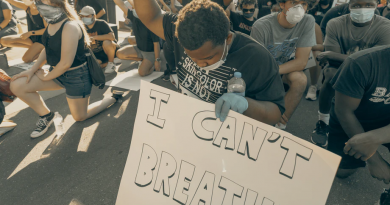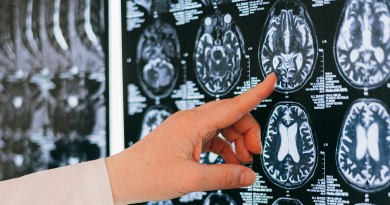Education as advocacy: Driving real change in adolescent and young adult health
As a training adolescent medicine specialist, I see in my day-to-day clinic that adolescents and young adults are struggling more than ever with their mental and physical health. But how can healthcare professionals make a lasting impact beyond the clinic? In our recent commentary in the Journal of Adolescent Health, we highlight a powerful approach: education as a form of advocacy.
Advocacy is an important part of healthcare. As medical innovation advances, it is becoming clear that the origins of illness are shifting, with factors outside the healthcare space having a greater impact on health than ever before. Addressing these influences challenges healthcare workers to broaden their approach to care by understanding the societal and structural factors that influence health. One way to address and change the systemic factors of health is advocacy.
Our commentary distinguishes between “little a” advocacy and “big A” Advocacy. “Little a” typically refers to advocating for an individual or local institutional change, such as addressing a specific patient’s needs. “Big A” Advocacy involves working to achieve structural change in policies or systems that impact a larger group of people, like orchestrating campaigns for legislation. Both are important and contribute to meaningful change.
Advocacy is a collaborative effort involving young people, families, community leaders, educators, policymakers and more. Education, especially, plays a large role in advocacy, and health professionals are uniquely positioned to be advocates. Their expertise, combined with real-world stories of how youth health programs make a difference, can be incredibly persuasive. Education isn’t just about sharing information – it’s a strategic tool for change. 
If you need ideas on how to get involved in education through advocacy, our commentary gives many specific ideas for action at the individual, institutional and community levels. Getting involved in public policy, specific organizations that champion certain causes, the education of future health professionals and research are such important avenues for advocacy. Of course, advocacy is not complete without the key stakeholders – adolescent and young adults themselves. This commentary also gives ideas on how to engage them.
Advocacy isn’t without its hurdles. Health professionals often face time constraints and may encounter differing opinions or politicized environments. At times, advocacy can be viewed as lobbying, and there are restrictions in the workplace regarding lobbying. However, this commentary shows that advocacy is so much more than this.
Investing in adolescent and young adult health through education as advocacy offers a triple dividend: better health during adolescence and young adulthood, better health throughout one’s lifetime and better health for the next generation. By combining clinical evidence and real-world stories in education, health professionals can truly champion improvements in the healthcare system and uplift the health and well-being of all adolescents and young adults.
The commentary itself demonstrates the power of collaboration, gathering different healthcare workers who care about and contribute to adolescent health from all over the U.S. It was a great experience as a trainee to work with this group, and I look forward to continued collective advocacy in the future.
By Jelina Castillo, M.D. M.P.H., an adolescent medicine fellow at Baylor College of Medicine
Any opinions, conclusions, and recommendations expressed in this article are those of the author and do not represent the views of Baylor College of Medicine.
Note: In accordance with the Baylor College of Medicine Faculty, Staff, and Learner Advocacy Guidelines, BCM is subject to significant restrictions regarding participation in legislative and political activities. For more information, please refer to the Code of Conduct (PDF).



